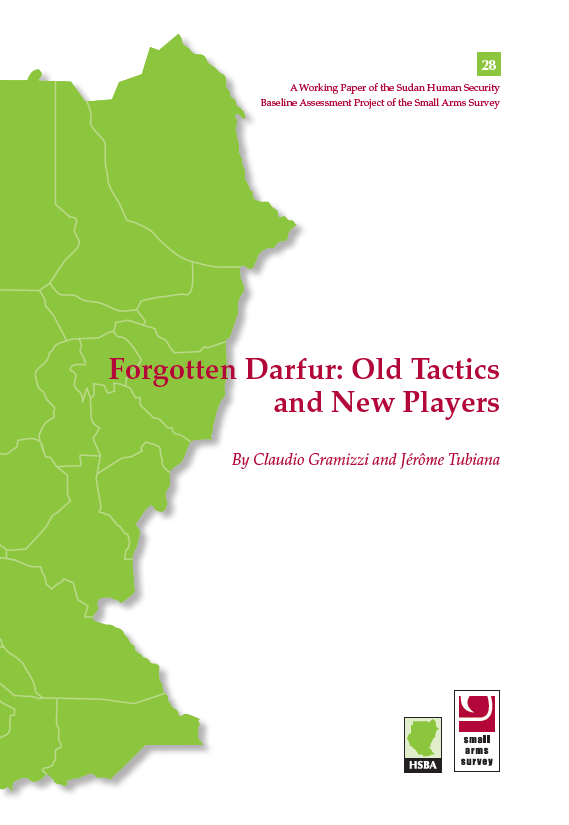
Forgotten Darfur: Old Tactics and New Players (HSBA Working Paper 28)
Publications
Working Paper
Arabic
English
Although the international community generally holds that the Darfur conflict has experienced profound and propitious improvement since 2010, Forgotten Darfur: Old Tactics and New Players thus argues that, as the conflict enters its ninth year, there is no clear-cut prospect of a decisive end to violent confrontation. Its key findings include the following:
- Since late 2010, new non-Arab ‘Popular Defence Forces’ have been recruited, trained, and armed by the Sudanese government to push Zaghawa rebel groups and civilian communities out of a wide swathe of eastern Darfur. About 70,000, mostly Zaghawa, individuals had been displaced by mid-2011, leading to a sequence of retaliatory attacks from both sides during mid-2011 and early 2012.
- Weapons and, in particular, newly manufactured ammunition continue to flow to these proxy forces and to the government forces in Darfur that back them, unimpeded by the wholly ineffective UN embargo on Darfur. While the UN Security Council is yet to authorize the publication of the latest findings of the Panel of Experts established to monitor the embargo, new evidence from South Kordofan indicates that the trend of ‘just-in-time’ international ammunition supplies to SAF identified by the Panel in 2010 appears to be continuing.
- The Darfur conflict continues to be characterized by aerial bombardment in all states of the region, in support of ground operations against rebel forces themselves and, in some cases, deliberately targeting civilian settlements believed to be supportive or identified with rebel forces. This aerial capacity, deployed in violation of Security Council resolutions, is maintained through ongoing international support via Sudanese, Middle Eastern, and Eastern European corporate actors that sustain the military–logistical assets used both to bomb Darfur and to deliver arms.
- Ironically, SAF in Darfur is the primary source of supply—mainly through battlefield capture—to Darfur rebel groups.
- While the removal of the Muammar Qaddafi regime has ended officially sponsored material support from Libya to JEM and the Sudan Liberation Army-Minni Minawi, rebel groups claim that they moved significant materiel from Libya’s poorly secured southern stockpiles after the fall of the regime.
- Darfur rebels’ involvement in the South Kordofan conflict increased during late 2011 and 2012, with JEM forces in particular ending combat operations in Darfur between mid-2011 until early 2012. This fragile alliance with the SPLM-N is rooted in tribal connections, particularly among the marginalized Masalit groups of Darfur, Western Bahr al Ghazal, and the Nuba Mountains.
- With both the SPLAand the GoSS leadership split over assistance to Darfur rebel groups, the SPLA until late 2011 retained division-level links with the small encampments of Darfur rebels present in Western and Northern Bahr al Ghazal. The presence of Darfuris in Bahr al Ghazal, while not as extensive as has been claimed by the Government of Sudan, has coincided with the largely unreported escalation of military incidents between SAF and the SPLA along the South Darfur–South Sudan border, raising the possibility of significant future conflict in this critically contested area.
Also available in ARABIC.
- More about the HSBA project
Have your say about Small Arms Survey publications and products: take 5 minutes to fill out our questionnaire.
Download